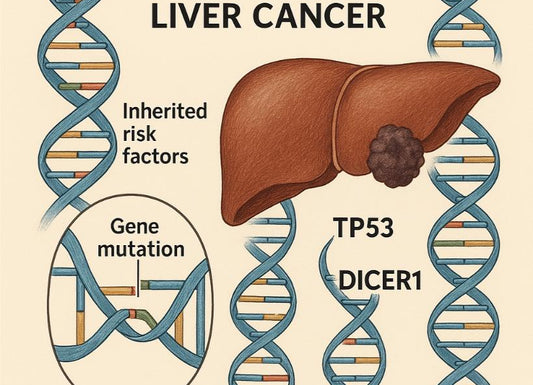Stage 4 Liver Cancer: How Long to Live?
 Written By
Jaclyn P. Leyson-Azuela, RMT, MD, MPH
Written By
Jaclyn P. Leyson-Azuela, RMT, MD, MPH

Stage 4 liver cancer: how long to live? This is, but, a normal question to ask when you’re confronted by the fact that this may be the end stage. So when someone hears the words “stage 4 liver cancer,” time suddenly feels both fragile and aggressive. Families, and even patients themselves, often ask “how long do they have” and it’s followed by a sad long pause from the doctor's point of view.
Doctors often pause before answering, because this truth is layered. It entails confrontation with the truth that there are no hard and fast answers, only uncertainty. Medically, it depends on the person, the liver, the spread, and the treatment path taken.
While statistics give averages, they never define a life. Some people outlive predictions by months or even years, especially with modern therapies and attentive self-care. This article explores what stage 4 liver cancer means, the factors that shape survival, how new tools like at-home urine test strips can help you stay informed and supported.
Key Insights
-
The median survival length may be up to 11 months
-
The median survival length for those beyond transplantation is 3-4 months
-
The five-year survival rate is about 3%
-
Stage 4 liver cancer means the cancer has spread beyond the liver to the lymph nodes or distant organs
-
Liver function, extent of spread, treatment response, and general health all influence the lifespan
-
Urine test strips can track bilirubin and alert to liver stress between doctor visits
-
The best supportive steps include early palliative care, nutrition, symptom management, and emotional planning
What Is Stage 4 Liver Cancer?
Stage 4 liver cancer means that the cancer has spread beyond the liver. It is also otherwise known as metastatic liver cancer.
Stage 4 liver cancer is divided further into two categories:
-
Stage 4A: The cancer has reached the nearby lymph nodes but remains largely in the liver
-
Stage 4B: The cancer has spread to distant organs, often the lungs or bones
At this stage, the liver may no longer be able to perform its normal functions such as:
-
Filtering blood
-
Producing bile
-
Storing nutrients
With these functions impaired, it could result in symptoms like fatigue, yellowing of the skin or eyes (jaundice), and abdominal swelling, which are often intense or have worsened from mild symptoms early on.
How Is Stage 4 Liver Cancer Diagnosed?
The diagnosis for stage 4 liver cancer is diagnosed through multiple approaches. You may have initially received a liver cancer diagnosis before through a series of tests and biopsies. However, for specific diagnosis of stage 4 liver cancer, there are also multiple ways to do this:
-
Imaging: CT-Scan, MRI, and PET Scan are methods that can reveal tumor spread.
-
Blood Markers: Elevated AFP (alpha-fetoprotein) often signals liver tumor activity.
-
Liver function tests: Measure bilirubin, ALT, AST, and albumin.
-
At-home test strips: Some patients use urine bilirubin strips between appointments to track early liver stress.
These tests can determine whether the cancer cells have invaded other organs other than the liver.
What Factors Influence Life Expectancy with Stage 4 Liver Cancer?
There is no definitive answer to life expectancy with stage 4 liver cancer. However, evidence shows averages or estimates based on real-world data. Nonetheless, life expectancy varies widely in every individual. It depends on the liver function at baseline, how far the cancer has spread in the body, and the person’s general health.
Liver Function
The Child-Pugh Score is used to grade liver function. It is classified as follows:
-
Class A: This classification means the liver still has good function. It has better survival odds compared to advanced liver issues.
-
Class B/C: This classification means there is advanced impairment of liver function. It could also mean patients will have limited treatment tolerance.
Doctors often use this classification to know whether patients can still tolerate treatment or if it is better to have the patient be included in the liver transplant list.

Cancer Spread (TNM System)
The TNM system stands for tumor, nodes, and metastasis, which is a global standard used to describe the extent of cancer by evaluating these three key features.
-
T (Tumor): Size and number of liver tumors
-
N (Nodes): Lymph node involvement
-
M (Metastasis): Cancer in distant organs like lungs or bones
This system has specific criteria that will determine the distinct stage of cancer.
Treatment Response
Targeted therapies or immunotherapy can stabilize disease, while others may slow tumor growth enough to improve quality of life. The cancer stage also influences treatment response. Stage 4 liver cancer may not be as responsive to treatments compared to early stage disease. Nonetheless, it may still be able to respond to different approaches like palliative to control the symptoms.
Underlying Conditions
Presence of any underlying conditions, such as hepatitis B/C, cirrhosis, diabetes, or obesity-related liver disease can reduce liver resilience. These conditions can make the patient status even worse.
A “median” survival time means half of patients live longer. Your health, care plan, and early intervention can make that difference.
How Soon Do Symptoms Progress at This Stage?

Symptoms usually progress over several months, though pace varies by treatment and liver function. The symptoms also vary significantly for each patient so comparison may not be productive at all. Suffice to say that symptoms may be present in one and may be absent in another. Or, two patients may present with completely different sets of symptoms at all.
Nonetheless, the usual progression of symptoms may include:
-
Persistent fatigue and weakness
-
Loss of appetite or early fullness
-
Jaundice (yellowing of the skin or eyes)
-
Abdominal swelling (medically called ascites)
-
Confusion, forgetfulness, or mental fogging, which could be a result of toxin buildup
-
Dark urine
-
Pale-colored stools
When to Seek Immediate Care
If you or your loved one has been diagnosed with stage 4 liver cancer, you might want to take note of the following signs that should prompt immediate care.
-
Vomiting blood (hematemesis)
-
Rapid mental confusion or deterioration of consciousness
-
Severe abdominal pain
-
Rapid swelling or shortness of breath
Monitoring from Home
There are urine bilirubin test strips that can detect liver strain early. You can use them between appointments if:
-
Urine turns to dark or tea-colored
-
Energy drops noticeably, often felt as persistent fatigue that is unrelieved by rest
-
New confusion develops or frequent disorientation
However, it is important to iterate that you can only use home strips as a complement, not as a substitute for professional testing.
What Are the Survival Rates and Timelines for Stage 4 Liver Cancer?
There are no hard and fast rules when it comes to survival rates and timelines for stage 4 liver cancer. It may be prolonged for up to 11 months but in some cases it could be as short as 3-4 months, especially for those beyond the threshold for transplantation. The five-year survival rate is very low at around 3% though like mentioned some exceptional cases could be longer.
Survival Snapshot
|
Statistic |
Estimated Range |
|
General median survival |
Up to 11 months |
|
Median survival for patients beyond transplantation threshold |
3-4 months |
|
Five-year survival rate |
About 3% |
Why Some Live Longer
There are various reasons why some patients survive longer. It may include:
-
Better underlying liver health
-
Access to advanced or clinical trial therapies
-
Robust immune response
-
Proactive symptom monitoring
Most people with stage 4 liver cancer live months to a year, but every case is unique. So, just because you or your loved one is diagnosed with stage 4 liver cancer doesn’t mean you’ll automatically follow what the general numbers are.
Can Treatments or At-Home Testing Improve Outcomes?
Yes, while not curative in and of itself, treatment and monitoring can extend life and preserve comfort.

Treatment Options
|
Type of Treatment |
Purpose |
Potential Benefit |
|
Targeted therapy (e.g., Sorafenib, Lenvatinib) |
Blocks cancer growth signals |
Improves survival of patients |
|
Immunotherapy (e.g., Nivolumab, Pembrolizumab) |
Helps immune system attack cancer |
May trigger long-term control |
|
Localized therapy (e.g., TACE, radioembolization) |
Treats tumors directly |
Shrinks or stabilizes liver tumors |
|
Chemotherapy or radiation |
Reduces tumor load |
Symptom relief, palliative |
|
Palliative care |
Manages pain, fatigue, emotional needs |
Enhances quality of life |
|
Clinical trials |
Experimental drugs or combinations |
May improve survival odds |
At-Home Monitoring
Urine strips for bilirubin, urobilinogen, and protein can:
-
Detect early signs of liver stress
-
Encourage timely communication with your doctor
-
Provide peace of mind between visits
Some tips to use at-home test strips:
-
Test once or twice weekly, ideally and preferably early in the morning
-
Record results and note the trends by having a results diary
-
Contact your doctor if bilirubin levels are seen consistently
How to Cope and Plan for Advanced Liver Cancer

Coping means balancing medical care with emotional, physical, and practical support.
Practical Steps for Patients and Families
-
Seek palliative care early because this may reduce pain, nausea, and anxiety
-
Go for nutrition support like light, high-protein meals that will help prevent muscle loss
-
Take care of your mental health, such as going to support or therapy groups that can help combat fear and depression
-
Have your advanced directives ready, like putting your wishes in writing so that your family can have clarity on what you need and want
End-of-Life Expectations
In later months of your diagnosis, your appetite fades and fatigue worsens or deepens. There will be increasing confusion, jaundice, or swelling that may increase as liver function declines.
The focus during this stage should be to strengthen palliative care and enable hospice teams to give you as much comfort, connection, and dignity as soon as possible. This ensures that care aligns with your values.
So, even when cure isn’t possible anymore, control of symptoms and finding meaning still are.
Final Word
It is undeniable that stage 4 liver cancer is serious. But more than that, it is also deeply personal. There is no single number that defines how you’ll live the days ahead or how much time you have left. What matters during this time is that you have deepened your partnership with your team, your support network, and the small steady actions that help you live each day on your own terms.
At-home test strips, regular and open communication with your doctor, and seeking early palliative care can all help transform fear and anxiety into clarity and focus, which can bring peace of mind to you and to those you care about.
Always remember that the statistics are averages, not predictions. Many people live beyond medical expectations, which is great, with attentive medical care and self-monitoring.
Related Resources
Is Liver Cancer Curable? Things to Know
Is Liver Cancer Hereditary? Genetic Risks and Family History
Quick Summary Box
-
General average survival time may reach up to 11 months
-
The survival time is influenced by liver function, overall health, and treatment response
-
At-home tools like urine bilirubin test strips for ongoing monitoring are especially useful
-
The key goal is balanced longevity with comfort and quality of life
-
There should be adequate support like palliative care and emotional guidance that can improve your well-being
References
Ben‐Aharon, O., Magnezi, R., Leshno, M., & Goldstein, D. A. (2019). Median Survival or Mean Survival: Which Measure Is the Most Appropriate for Patients, Physicians, and Policymakers? The Oncologist, 24(11), 1469–1478. https://doi.org/10.1634/theoncologist.2019-0175
Huang, A., Yang, X.-R., Chung, W.-Y., Dennison, A. R., & Zhou, J. (2020). Targeted therapy for hepatocellular carcinoma. Signal Transduction and Targeted Therapy, 5(1). https://doi.org/10.1038/s41392-020-00264-x
Kumar, M., & Panda, D. (2014). Role of Supportive Care for Terminal Stage Hepatocellular Carcinoma. Journal of Clinical and Experimental Hepatology, 4(3), S130–S139. https://doi.org/10.1016/j.jceh.2014.03.049
Li, D. Y., VoPham, T., Tang, M.-T. C., & Li, C. I. (2022). Disparities in risk of advanced stage liver cancer and mortality by race and ethnicity. JNCI: Journal of the National Cancer Institute. https://doi.org/10.1093/jnci/djac097
Markman, M. (2019, February 21). Metastatic Liver Cancer: Spread, Symptoms & Treatments. Cancer Treatment Centers of America. https://www.cancercenter.com/cancer-types/liver-cancer/types/metastatic-liver-cancer
National Cancer Institute. (2019, September 24). Immunotherapy to Treat Cancer. National Cancer Institute; Cancer.gov. https://www.cancer.gov/about-cancer/treatment/types/immunotherapy
National Cancer Institute. (2022, October 14). Cancer Staging. National Cancer Institute. https://www.cancer.gov/about-cancer/diagnosis-staging/staging
Thitiporn Pathomjaruwat, Yaowarat Matchim, & Armer, J. M. (2024). Symptoms and symptom clusters in patients with hepatocellular carcinoma and commonly used instruments: An integrated review. International Journal of Nursing Sciences, 11(1), 66–75. https://doi.org/10.1016/j.ijnss.2023.09.009
Tsoris, A., & Marlar, C. A. (2023). Use of the child pugh score in liver disease. PubMed; StatPearls Publishing. https://www.ncbi.nlm.nih.gov/books/NBK542308/
Zainal, N., & Hasbullah, H. H. (2018). Prolonged survival of metastatic hepatocellular carcinoma: a case report. Journal of Gastrointestinal Oncology, 9(2), E6–E8. https://doi.org/10.21037/jgo.2018.01.04

Jaclyn P. Leyson-Azuela, RMT, MD, MPH, is a licensed General Practitioner and Public Health Expert. She currently serves as a physician in private practice, combining clinical care with her passion for preventive health and community wellness.



